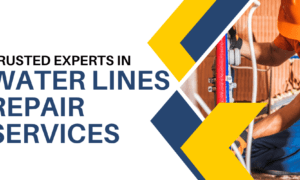What Role Does Employee Training Play in Successful Tech Implementation?
In the fast-evolving landscape of workplace technology, CEOs and Chief Technology Officers emphasize the pivotal role of employee training. From implementing continuous learning programs to planning training from the very start of tech implementation, we’ve compiled ten expert tips to elevate your team’s tech savvy. Dive into the insights from top business leaders and tech gurus on enhancing tech proficiency for successful technology adoption.
- Implement Continuous Learning Programs
- Adopt Short, Regular Training Bursts
- Provide Continuous Training and Support
- Foster a Culture of Mentorship
- Create Scenario-Based Training Modules
- Pair Employees in Mentorship Programs
- Prioritize Hands-On, Immersive Training
- Start Training Before Tech Rollout
- Adopt a Continuous Learning Approach
- Plan Training from the Implementation Start
Implement Continuous Learning Programs
Implementing continuous learning programs is the key to enhancing workforce tech proficiency. At Tech Advisors, we regularly update our training modules and provide ongoing education opportunities to keep our team up to date with the latest tech trends. For instance, when we introduced a new cybersecurity protocol, our thorough training sessions ensured our staff could seamlessly integrate it into their daily routines, leading to a 40% decrease in security incidents.
Additionally, we encourage hands-on practice. Practical, real-world applications during training help solidify knowledge and build competence. For example, during our compliance audits, we often create simulated scenarios for employees to practice responding to potential IT issues. This approach builds skills and boosts confidence, ensuring smoother transitions and better tech adoption.
Konrad Martin, CEO, Tech Advisors
Adopt Short, Regular Training Bursts
Employee training is absolutely crucial for the successful implementation of new technologies. At Datics AI, when we rolled out our cloud-optimization tools, we made sure every team member was well-versed and confident in using the new systems. Through hands-on, real-world, scenario-based training sessions, we were able to ensure that our staff not only understood the functionalities but also how to apply them effectively to solve daily operational challenges. This approach led to a marked increase in efficiency and a significant reduction in downtime.
One key tip for businesses aiming to enhance their workforce’s tech proficiency is to integrate continuous and adaptive learning into the work environment. Instead of overwhelming staff with lengthy, infrequent workshops, we adopted short, regular training bursts paired with immediate practical application. For example, when implementing new project management tools like Asana and Slack, we introduced features in stages, allowing team members to master each tool before moving on. This method improved both the speed and quality of adoption, significantly boosting our team’s productivity.
Additionally, documenting processes and setting up knowledge-sharing frameworks played a crucial role. By creating comprehensive guides on tasks like updating code on GitHub or managing files on Google Drive, we ensured new employees could quickly get up to speed and contribute effectively. This strategy not only maintained a high level of operational continuity but also reduced the impact of staff turnover, ensuring that our projects remained on track regardless of team changes.
Umair Majeed, CEO, Datics AI
Provide Continuous Training and Support
Effective employee training plays a vital role in the successful implementation of new technologies. Without proper training, employees may encounter challenges, resistance, or fail to fully utilize the potential of the technology. To ensure a seamless transition and maximize the benefits of new technologies, businesses should prioritize comprehensive training programs that equip employees with the necessary skills and knowledge.
A key tip for businesses seeking to enhance their workforce’s tech proficiency is to provide continuous training and support. Given the ever-evolving nature of technology, it is crucial to offer ongoing learning opportunities to keep employees updated with the latest advancements. This can involve regular training sessions, interactive workshops, or granting access to online resources and courses tailored to their specific needs.
Rubens Basso, Chief Technology Officer, FieldRoutes
Foster a Culture of Mentorship
I believe that employee training is vital for the successful implementation of new technologies. Proper training ensures that our team can effectively utilize advanced machinery and software, leading to increased productivity and precision in our processes.
Well-trained employees are more confident and efficient, which directly impacts our ability to stay competitive and meet customer needs. One key tip for businesses aiming to enhance their workforce’s tech proficiency is to foster a culture of mentorship and peer learning.
Encouraging experienced employees to share their knowledge and skills with newer team members can accelerate learning and create a collaborative environment where everyone benefits from shared expertise. By prioritizing this approach, we can ensure our team is always prepared to make the most of the latest innovations.
Cameron Lee, CEO and Tech Expert, ACCURL
Create Scenario-Based Training Modules
Employee training is absolutely crucial for the successful implementation of new technologies. My experience with Daisy has solidified this belief. For instance, when we collaborated with PrepTECH to onboard new technicians, we implemented a rigorous four- to six-week bootcamp focusing on the fundamentals of home automation technology. This approach ensured that our junior techs hit the ground running with a robust working knowledge of jobsite expectations, processes, terminology, and tools.
A key tip for businesses aiming to enhance their workforce’s tech proficiency is to create real-world, scenario-based training modules. For example, during PrepTECH’s apprentice program, technicians were subjected to simulations that closely mimicked actual jobsite conditions. This hands-on method was crucial in helping them understand not only the functionalities of the tech but also practical applications. Consequently, they were not just learning in a vacuum—they were experiencing and troubleshooting real scenarios, which strengthened their proficiency and confidence.
Additionally, continuous learning and support are fundamental. At Daisy, we follow a 90-day Skills Validation Checklist for new hires, ensuring they grasp daily tasks and are proficient in their roles. We also provide Daisy mentors for additional guidance and support during the onboarding process. This approach minimizes the learning curve and ensures sustainable, long-term tech proficiency. This strategy has significantly contributed to our ability to provide personalized, ongoing support to our clients, which is pivotal in our industry.
Hagan Kappler, CEO, Daisy
Pair Employees in Mentorship Programs
Employee training stands as the backbone of successful technology implementation. Without it, even the most advanced systems can fail due to user error or lack of understanding. Training ensures that employees not only know how to use new tools but also how to leverage them to their full potential, paving the way for seamless integration and better productivity.
One effective tip is to adopt a mentorship program. Pair tech-savvy employees with those who may struggle with new technologies. This peer support helps build confidence and fosters a collaborative environment where knowledge is shared more organically. People often learn better from peers who can explain things in a relatable way, making this approach both practical and scalable.
Jessica Bane, Director of Business Operations, GoPromotional
Prioritize Hands-On, Immersive Training
In my experience, employee training is absolutely crucial for the successful implementation of new technologies. When bringing in any tech upgrade or overhaul, it’s important to remember that your team members are the ones who will actually be utilizing these tools day-to-day. Without proper training, you run the risk of confusion, frustration, wasted time, and missed opportunities.
For example, I once consulted for a company that had invested significantly in a new cloud-based project management system but had not adequately prepared employees on how to leverage the software. Many reverted back to old spreadsheet methods, severely limiting the ROI. My key tip is to never underestimate the power of hands-on, immersive training—both before and after rollout. Allow plenty of time for employees to get comfortable navigating and practicing within the real-world system. Be available to answer questions and provide ongoing support. A well-trained team is an empowered team, primed to get the most out of your tech investment.
Sunaree Komolchomalee, Head of HR, Cupid PR
Start Training Before Tech Rollout
Training your team is absolutely fundamental when rolling out new workplace technologies. No matter how advanced or apparently user-friendly the new tools are, they’re useless if not enough people can use them effectively. That’s why you need to make sure everyone is promptly brought up to speed. And this isn’t just about avoiding mishaps when your team uses the new tech; it’s about empowering them to make the most out of every new tool at their disposal.
You should start training before the technology is even fully implemented. Use this pre-launch phase as a test bed for feedback and to adjust your training processes as needed. This approach will help iron out kinks early, and it helps get your team comfortable and confident with the technology from day one. You’ll see quicker adoption rates and better overall integration with your existing systems by applying this method.
Alex Ugarte, Operations Manager, London Office Space
Adopt a Continuous Learning Approach
Employee training is absolutely crucial in the successful implementation of new technologies. Without proper training, even the most advanced and beneficial technology can fail to deliver its intended results due to user error, resistance, or underutilization. When employees are well-trained, they not only understand how to use new tools effectively but also feel more confident and engaged, which can lead to higher productivity and innovation.
I always highly recommend adopting a continuous learning approach rather than one-time training sessions. This can be achieved by integrating regular, hands-on training workshops, online tutorials, and ongoing support into the work culture. Encouraging a learning environment where employees can ask questions, experiment with new tools, and share insights with their peers will ensure that they stay updated with technological advancements and are able to leverage new technologies to their full potential.
Regular feedback sessions and performance assessments can help tailor the training programs to address specific needs and challenges, ensuring that the workforce remains proficient and adaptable to new tech developments.
Stephen Hudson, Managing Director, Printroom
Plan Training from the Implementation Start
When you gloss over planning for training when implementing new technologies, your team will not buy into the process because they are stressed out and overwhelmed.
Think about training from the beginning. Have team members give their input on the best features or what they find frustrating before launching to the entire team. This will allow you to get the pulse of the team and be able to enhance the training with relevant information on what vexed the employees who tested the technology.
Jamie Steele, Productivity Coach and Consultant, Tidy Your Time LLC
Related Articles
- How Do You Future-Proof Your Business in the Face of Rapidly Evolving Technologies?
- How Do Startups Navigate Regulatory Challenges With AI Implementation?
- How Can Startups Overcome AI Skill Gaps in Their Teams?



































